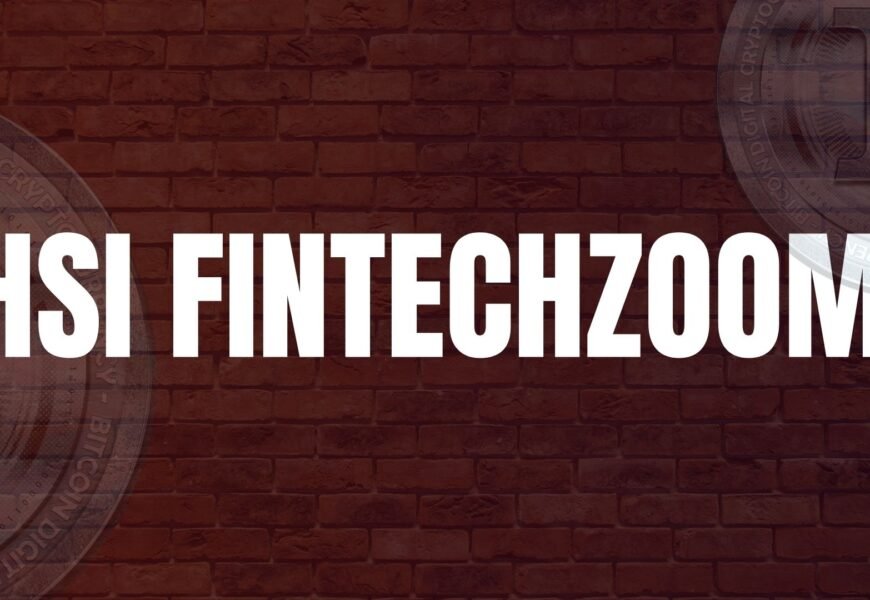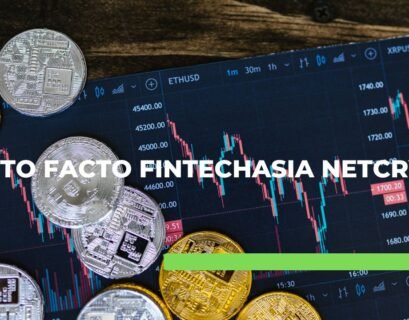Refresh the HSI FintechZoom dashboard this morning, and you will see two heat-seeking clusters lighting up opposite corners of the screen. On the left, mega-cap platform companies—Tencent, Alibaba, Meituan, JD.com—flash variations of amber and green as algorithmic trackers pick up renewed momentum in the Hang Seng TECH Index. On the right, heavyweight developers such as Sun Hung Kai, CK Asset, and Sino Land show bruised reds and yellows, signaling fresh skepticism after a brief stimulus-led reprieve earlier in the month. The upshot is a visual shorthand for the question animating Hong Kong’s market in May 2025: Will surging technology names keep dragging the benchmark higher, or will the property malaise reassert itself and cap the rally? If HSI FintechZoom data is any guide, the answer lies in a nuanced reading of cross-sector capital flows rather than a binary bet on one side winning outright.
Table of Contents
How FintechZoom Frames the Battle
Unlike a traditional quote screen, HSI FintechZoom ingests ADR gaps, overnight futures, options skew, and social-media sentiment, then funnels them into color-coded risk tiles. By 8:45 a.m. HKT, the system had already parsed New York’s closing prints and Asia-Pacific headlines, assigning probability scores to each of Hang Seng’s twelve industry groups. Today, tech carries a 67 % “positive-drift” reading versus the property’s 41 %, the widest dispersion since January’s reopening bounce. Over the past three sessions, volume-at-price overlays show that roughly HK $5.7 billion in passive inflows has rotated into internet and hardware names. In comparison, HK $2 billion has leaked from real-estate hsi fintechzoom developers—a divergence that narrows only slightly once REITs are factored in. To traders who spent the past decade mesmerized by China’s property cycle, the dashboard is a daily reminder that the balance of market leadership has decisively tilted.
Why Tech Titans Keep Grabbing the Wheel
Three catalysts underpin tech’s resilience. First, regulatory thaw. Beijing’s cyberspace watchdog has quietly fast-tracked several game licenses and hinted that anti-trust probes are winding down—news that FintechZoom’s keyword-sweep module hsi fintechzoom scored a “High Heat” alert for Tencent and NetEase. Second, AI exports optimism. The DeepSeek LLM breakthrough, publicized during the April Canton Fair, has stoked global demand for Hong Kong-listed chip fabricators; the HSI TECH Index is up nearly 20 % year-to-date, even after profit-taking last week. Third, capital-flow asymmetry. U.S.-dollar strength and Fed-pause hopes are funneling hedge-fund money into liquid Asia tech plays. Overnight prime-broker data, scraped by FintechZoom, shows net long additions in HK tech outpacing short sales by 3.4:1—its highest ratio hsi fintechzoom since Q3 2023. These inputs feed the platform’s “Trend Temperature” bar, which sits at a toasty 78 out of 100 for the sector.
Property Giants: Discount Plays or Value Traps?
On paper, developers appear cheap. Forward price-to-book multiples hover around 0.42—levels last visited during the 2008 crisis. Mortgage-rate cuts and looser down-payment rules on the mainland triggered a brief short-covering rally in late April, but high-frequency mortgage approvals remain anemic, and Hong Kong office vacancy just logged a post-SARS hsi fintechzoom high at 14 %. FintechZoom’s distress indicator, which blends bond-yield spreads with newsroom sentiment, still flashes “Caution.” Even supportive macro snippets—like HIBOR dropping to 3.45 %, a boost for rate-sensitive REIT distributions—haven’t been enough to flip the sector’s composite score into bullish territory.
Meanwhile, private credit funds, not banks, are financing many property transactions, underlining how traditional lenders continue to retreat. hsi fintechzoom Bulls argue that low leverage and hefty land banks make blue-chip developers defensive. Bears counter that cap-rate expansion is a steamroller few balance sheets can outrun.

Macro Winds Fanning the Flames
Zoom out, and the broader macro tableau looks equally conflicted. The Hang Seng has outperformed the mainland’s CSI 300 by the widest margin since 2008, courtesy of southbound inflows and tech’s revival. Yet the same cross-border currents fueling tech exuberance can snap back if US-China tariff talks sour or the Fed surprises hawkishly. Brent crude’s slide below US $82, captured on FintechZoom’s hsi fintechzoom commodities tile, should relieve transport and utility names, but it also signals soft demand—hardly bullish for property rents. Meanwhile, the renminbi fix has firmed against offshore rates for three straight sessions, implying Beijing prefers calm ahead of next week’s industrial-production print. History suggests a stronger CNY helps property stocks more than tech exporters, setting up another seesaw.
Reading the Live Tape: Three Data Points to Watch Today
- Gap-Scope Differential – FintechZoom’s pre-auction model predicts a 1.3 % average upside gap for tech constituents versus a 0.4 % downside gap for developers. Anything wider tips the open toward sector momentum plays.
- Options Contango – Implied vol for one-week HSI calls sits at 1.6 vol points over puts. If the gap compresses intraday, it often precedes property-led mean reversion as defensive hedges get bid.
- Southbound Turnover Spike – A surge past the HK $25 billion mark within the first hour usually accompanies tech-heavy buying. Property names below HK $18 billion tend to catch a relative bid as local funds bargain hunt. hsi fintechzoom streams these figures in 10-second snapshots, giving active desks an agility edge over manually refreshed exchange feeds.
Strategy Desk: Turning Information into Alpha
Scenario planning beats prediction. Start each session by mapping three tapes—bullish tech breakout, property relief rally, or range-bound churn. Align position sizes so a two-sigma move in your least liquid holding clips no more than 1 % of capital. For tech longs, pair exposure with at-the-money put spreads to guard against overnight geopolitical shocks. For property punts, use mini-futures overlays to trim risk during Hong Kong’s midday hsi fintechzoom break, when cash equities freeze, but the news does not. Most importantly, FintechZoom’s sector heat maps should be treated as probability gradients, not gospel. The data excels at flagging where volatility clusters; discipline decides whether that volatility fattens or thins your P&L.
The Road Ahead: Can Both Sectors Win?
The easiest headline is “tech up, property down,” but market history rarely stays that binary. A synchronized rally is plausible if Beijing unleashes broader stimulus—rate cuts that lower funding costs for developers while turbo-charging growth multiples for internet platforms. Conversely, stagflation or renewed tariff wars could kneecap both hsi fintechzoom camps. For now, FintechZoom’s scorecards imply an uneasy equilibrium: tech leadership tempered by value-hungry dip-buyers in property whenever bad news fails to materialize. Traders who anchor exclusively to legacy property cycles risk underestimating the structural shift toward digital growth engines. Those who ignore property altogether miss tactical squeezes that can add meaningful basis points in a diversified book.
Closing Bell Takeaway
As the afternoon auction fades to black, the Hang Seng’s fate today—and for much of 2025—will likely hinge on the velocity of money between these two sectors rather than their absolute valuation gaps. HSI FintechZoom distills that velocity into heatmaps, sentiment bars, and probability ticks that shave hours off manual analysis. Use that time dividend to refine your exit rules, double-check hedge ratios, or step back and remember that markets are ecosystems, not battlefields. Tech titans and property giants may trade punches, but your edge lies in reading the data fast enough to dodge the blows and ride the next wave.

Frequently Asked Questions
1. What exactly does “HSI FintechZoom” cover that a normal trading terminal doesn’t?
It fuses Hang Seng cash, futures, and ADR data with option-skew analytics, social-media sentiment, and cross-asset correlations, then presents the blend in color-coded gauges. That compression lets you grasp sector momentum and macro risk in hsi fintechzoom seconds instead of piecing together ten separate data windows.
2. Why is the tech sector’s probability score higher than property’s today?
Positive policy hints for internet platforms, robust southbound inflows, and year-to-date returns near 20 % have driven FintechZoom’s hsi fintechzoom algorithm to assign tech a higher “positive-drift” rating. The property’s score lags because mortgage approvals and office space demand still look weak despite lower HIBOR.
3. Does a low price-to-book ratio make Hong Kong developers a safe bet now?
Not necessarily. While valuations are historically cheap, rising cap rates, high vacancy, and tighter traditional credit keep risk elevated. hsi fintechzoom distress indicator, therefore, flags the sector as “Caution” until fundamental demand indicators improve.
4. How can retail traders use FintechZoom without information overload?
Focus on three daily widgets: the pre-auction gap scope, the sector heatmap, and southbound turnover. They capture about 80 % of the hsi fintechzoom actionable edge most day traders need while keeping screen time under ten minutes.
5. Will upcoming Fed decisions affect this tech–property dynamic?
Yes. A dovish Fed typically weakens the US dollar and boosts global risk appetite, favoring HK tech. A hawkish surprise raises funding costs and could pressure tech multiples and property debt refinancing. Watching FintechZoom’s real-time FX and hsi fintechzoom rate tiles alongside its sector gauges helps anticipate those inflection points.

















